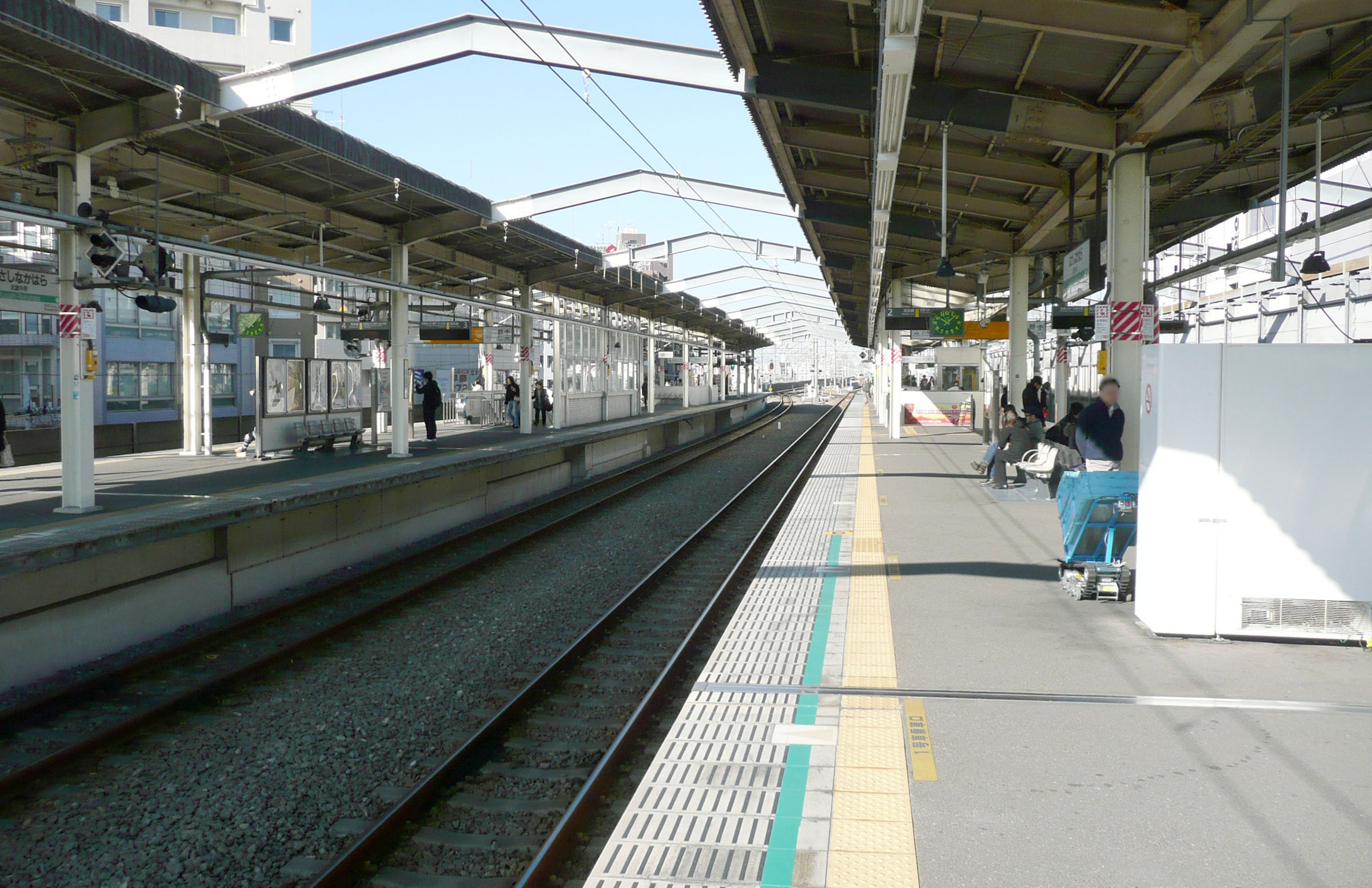Musashi-Nakahara Station on:
[Wikipedia]
[Google]
[Amazon]
is a passenger
 The station is staffed and consists of two
The station is staffed and consists of two
railway station
Rail transport (also known as train transport) is a means of transport that transfers passengers and goods on wheeled vehicles running on rails, which are incorporated in tracks. In contrast to road transport, where the vehicles run on a pre ...
located in Nakahara-ku, Kawasaki
is one of the 7 wards of the city of Kawasaki in Kanagawa Prefecture, Japan. As of November 2014, the ward had an estimated population of 244,565 and a density of 16,637 persons per km². The total area was 14.70 km².
Geography
Nakahara ...
, Kanagawa Prefecture
is a prefecture of Japan located in the Kantō region of Honshu. Kanagawa Prefecture is the second-most populous prefecture of Japan at 9,221,129 (1 April 2022) and third-densest at . Its geographic area of makes it fifth-smallest. Kana ...
, Japan
Japan ( ja, 日本, or , and formally , ''Nihonkoku'') is an island country in East Asia. It is situated in the northwest Pacific Ocean, and is bordered on the west by the Sea of Japan, while extending from the Sea of Okhotsk in the north ...
, operated by the East Japan Railway Company
The is a major passenger railway company in Japan and is the largest of the seven Japan Railways Group companies. The company name is officially abbreviated as JR-EAST or JR East in English, and as in Japanese. The company's headquarters are ...
(JR East).
Lines
Musashi-Nakahara Station is served by theNambu Line
The Nambu Line ( ja, 南武線,) is a Japanese railway line which connects Tachikawa Station in Tachikawa, Tokyo and Kawasaki Station in Kawasaki, Kanagawa. For most of its length, it parallels the Tama River, the natural border between Tokyo and ...
. The station is from the southern terminus of the line at Kawasaki Station Kawasaki station may refer to:
* Kawasaki-juku ( ja, 川崎宿, Kawasaki-shuku, Kawasaki lodging), a Tōkaidō waystation in Kawasaki-ku, Kawasaki, Kanagawa, Japan
* Kawasaki Station ( ja, 川崎駅, Kawasaki-eki, Kawasaki Station, a train station ...
.
Station layout
island platform
An island platform (also center platform, centre platform) is a station layout arrangement where a single platform is positioned between two tracks within a railway station, tram stop or transitway interchange. Island platforms are popular on ...
s serving four tracks. Platforms 2 and 3 are used for trains starting from Musashi-Nakahara, as their tracks in the opposite direction lead to Nakahara Depot. The station has a ''Midori no Madoguchi
, which stands for ''Multi Access (originally Magnetic-electronic Automatic) seat Reservation System'', is a train ticket reservation system used by the railway companies of former Japanese National Railways, currently Japan Railways Group (JR Grou ...
'' staffed ticket office an automatic ticket gates.
Platforms
History
Musashi-Nakahara Station opened as a station on the Nambu Railway on 9 March 1927. The Nambu Railway wasnationalized
Nationalization (nationalisation in British English) is the process of transforming privately-owned assets into public assets by bringing them under the public ownership of a national government or state. Nationalization usually refers to pri ...
on 1 April 1944, becoming part of the Japanese Government Railway
The Japanese Government Railways (JGR) was the national railway system directly operated by the Japanese Ministry of Railways ( ja, 鉄道省, Tetsudō-shō, ) until 1949. It was a predecessor of Japanese National Railways and the later Japan Rai ...
(JGR) system, which became the Japanese National Railways
The abbreviated JNR or , was the business entity that operated Japan's national railway network from 1949 to 1987.
Network Railways
As of June 1, 1949, the date of establishment of JNR, it operated of narrow gauge () railways in all 46 pref ...
(JNR) from 1946. Freight operations were discontinued from January 16, 1961. Along with privatization
Privatization (also privatisation in British English) can mean several different things, most commonly referring to moving something from the public sector into the private sector. It is also sometimes used as a synonym for deregulation when ...
and division of JNR, JR East
The is a major passenger railway company in Japan and is the largest of the seven Japan Railways Group companies. The company name is officially abbreviated as JR-EAST or JR East in English, and as in Japanese. The company's headquarters are ...
started operating the station on 1 April 1987. The station was rebuilt in 1990, moving 200 meters towards Musashi-Kosugi Station
are a pair of physically separated interchange passenger railway stations, a block from each other, located in Nakahara Ward of eastern Kawasaki, Kanagawa, Japan, operated by East Japan Railway Company (JR East) and the private-sector railway o ...
, and with the tracks becoming elevated.
Passenger statistics
In fiscal 2019, the station was used by an average of 34,198 passengers daily (boarding passengers only). The passenger figures (boarding passengers only) for previous years are as shown below.Surrounding area
* Fujitsu Kawasaki Factory (Registered Head Office) *Todoroki Athletics Stadium (J League Kawasaki Frontale home stadium) *Kawasaki City Museum *Kanagawa Prefectural Shinjo High School *Kawasaki City Oto Elementary School *Kawasaki City Nishinakahara Junior High SchoolSee also
*List of railway stations in Japan
The links below contain all of the 8579 railway stations in Japan.
External links
{{Portal bar, Japan, Trains
*
Railway stations
Japan
Japan ( ja, 日本, or , and formally , ''Nihonkoku'') is an island country in East Asia. It ...
References
External links
* {{Nambu Line Railway stations in Kanagawa Prefecture Railway stations in Japan opened in 1927 Railway stations in Kawasaki, Kanagawa